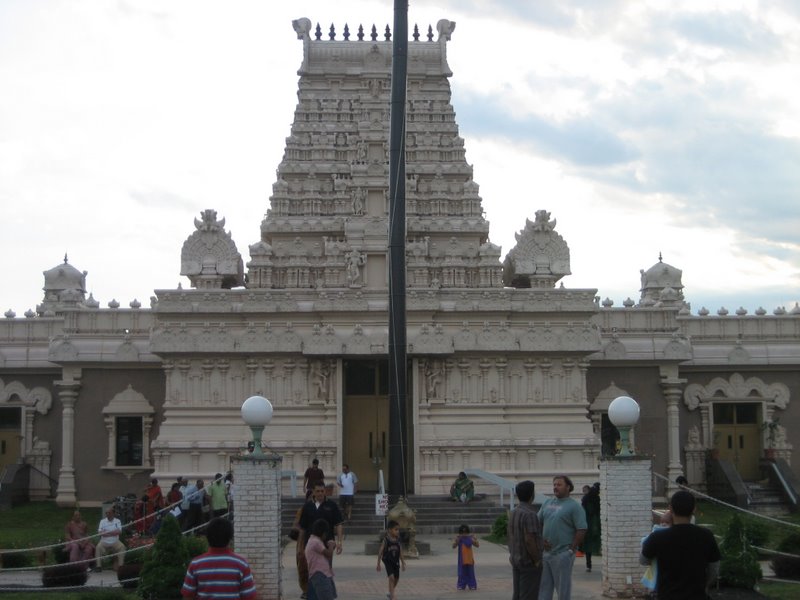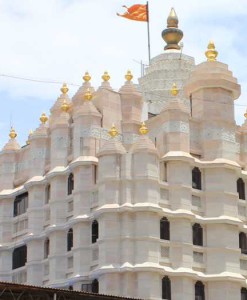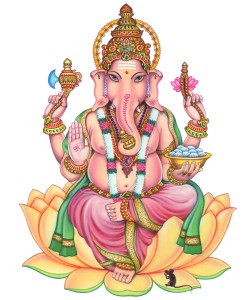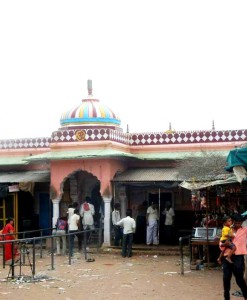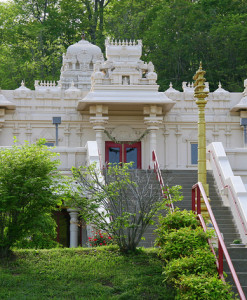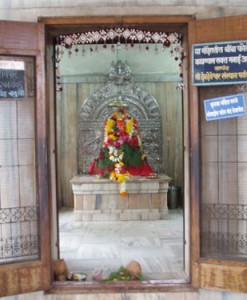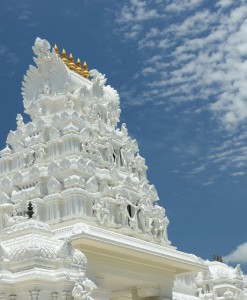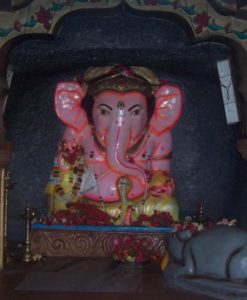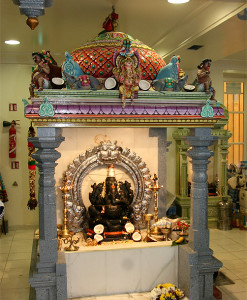No products in the cart.
Opened September 6, 1986, Sri Lakshmi Temple is a large regional Hindu temple located on Waverly Street and is the largest such temple in New England. Sri Lakshmi temple hosts several Hindu functions throughout the year. First housed in a Knights of Columbus Hall in Melrose in 1978 and later in the Needham Village Club, the congregation purchased about 12 acres (49,000 m2) of land from Ashland in 1981
Sri Lakshmi Temple, Ashland;
The vision of a Hindu Temple in New England appeared in the minds of a few people in 1978. Driven by this divine inspiration, an ad hoc committee was established in March 1978 when every member seeded $ 101 to assiduously pursue the goal of building the temple. A formal constitution was drafted and an application for incorporation was duly filed with the Commonwealth of Massachusetts.
The early days of the organization were devoted to establishing its by-laws and on discussions on the scope and nature of the project of building the temple. Foremost in the minds of everyone was the desire that the temple should be a place of worship for all the Hindus living in and visiting this area. At a meeting on August 12, 1978, the committee decided to dedicate this temple to Goddess Sri Lakshmi as the presiding deity, since most of us have come to this country in search of the prosperity and happiness bestowed by the grace of Mahalakshmi.
The inaugural function of New England Hindu Temple, Inc. was conducted with Mahalakshmi Pooja and Diwali celebrations on October 28, 1978 at the Knights of Columbus Hall in Melrose, Massachusetts. Exuberance and excitement filled the hearts and minds of everyone in the large congregation as they witnessed and experienced an authentic pooja service to Sri Lakshmi and it filled their spiritual need. This was easily seen as pledges and donations started coming in even before securing the non-profit status. Non-profit status from the Internal Revenue Service was secured on November 28, 1978 for tax-deductible contributions. The place of congregation was soon changed to Needham Village Club which was more centrally located.
In the summer of 1981, about twelve acres of land in the town of Ashland, Massachusetts were acquired for constructing the temple. services of Sri Ganapathy Sthapathy from the Institute of Architecture and Sculpture in Tamil Nadu were sought to design the temple according to the Agama Sastras. He visited in November 1982 and provided detailed plans for the temple. In early 1983, M/S MacNevin and Kerivan Engineering, Inc. of Wellesley was engaged to prepare the engineering design and drawings which were submitted to the Town of Ashland for approval. The land was cleared in the fall of 1983 and in the following spring the excavation work was carried out by Guigli & Sons. The contract for the foundation and structural work for the building was awarded to Kaikunte Engineering Corporation in Sharon in the summer of 1984. The ground breaking ceremony was observed on June 19, 1984 with a grand celebration of Ganesh Pooja.
In the fall of 1984 the temple applied to Thirumaial-Thirupathi Devasthanam in India for a loan to help hasten the construction of the temple. The application was duly approved and the first installment of Rs. 5 Lakhs was received in July 1985. The loan has now been repaid. When the initial contract with Kalkunte Engineering Corporation for the foundation and infra structure was completed, the first Ganapathy Homam in the temple was performed in September 1985. The contract to complete the building with all the utilities needed for occupancy was awarded to Parekh Construction Co. in Woburn, Massachusetts. The first floor had the mahdmandapam (60’x5O’) with an Alankaramandapam for Lord Nataraja and His consort Sivakami.
A paved driveway to the temple from Waverly Street with parking spaces for 100 cars was also provided. The receipt of the occupancy permit for the temple in September 1986 was an important milestone on the road to the completion of the mammoth project. This was celebrated with a grand opening Ceremony on September 6, 1986. Sri Janakiram Sastrigal of Rajarajeswari Peetam in Stroudsburg, PA graciously performed the inaugural pooja along with our local part-time priests.
The temple has remained open during the week-ends ever since with all the major Hindu feswals being celebrated in a traditional manner. Cultural activities such as classical music and dance concerts, Thyagaraja Aradhana, Dikshitar Day, Surdas & Meera Bhajans and discourses have further transformed the temple into the focal point of the Hindu community.
Extending from the mahamandapam by another thirty feet, sanctums for the principal deities Ganesh, mahalakshmi and Venkateswara were constructed beginning in September 1987 with the contract assigned to Parekh Construction Co. As the time approached for Hindu architectural ornamentation of the sanctums with vimana gopuram (sikhara), the service of Sri Muthiah Sthapathy of Tamil Nadu was contracted in 1988. In the same year, Sri Shadrinarayana Bhattar was appointed as the first full-time priest of the Srilakshmi temple to provide regular services within the temple as well as services such as weddings, Grahapravesams, Namakaranam etc. as required by the Hindu community at their residences. When he returned to India, Sri Krishna Bhattar was appointed to fill in the vacancy.
The spring of 1989 saw the arrival of ten artisans (silpis) from India skilled in the architectural work of the temple. With their arrival, the exquisite magnificence of the sancta with their vimana gopurams began to take shape. Their patient and devoted work under adverse weather conditions has brought us to the celebration of Rajagopuram Kumbhabhishekam. Plans for the Kumbhabhishekam were initiated in the fall of 1989. Sri Sampathkumar Bhattacharlar of Bangalore and Sri Sambamoorthy Sivachariar of Madras were chosen as chief priests to perform the Kumbhabhishekam with a host of other priests assisting them in this consecration ceremony.
The granite idols of Ganesh with Mooshikam and Balipeetam, Mahalakshmi, Venkateswara, Garuda and Dwarapalakas along with the bronze Utsavamurthis of Ganesh, Mahalakshmi, Venkateswara, Sridevi, Bhudevi and Sivakami were designed by Sri Ganapathy Sthapathy of the Institute of Architecture and Sculpture, Tamil Nadu and fabricated by the artisans at the institute. The bronze Utsavamurthis of Nataraja, Subrahmanya, Valli and Devasena were designed by Sri Muthiah Sthapathy. The ornamental designs of the sanctum and the vimana gopuram were skillfully executed according to the Hindu Agama-sastras by the Indian artisans. Coordination of the shipping of the idols from India was carried out through the considerable help rendered by Sri Meenakshisundaram and Sri Ramanujam of Madras. Sri N V Raghavan, also of Madras, has attended to the procurement of multifarious items required for the Kumbhabhishekam.
These are only a few of the many who have helped the temple in immeasurable ways to reach the present status of success in this ever growing project. Undoubtedly, the names of many people have not been mentioned due to lack of space. What was envisioned as a concept in 1978 took twelve years to blossom. Measured steps were taken all the way mostly due to the newness of the project. Through the grace and guidance of Goddess Srilakshmi, an important phase of the temple construction has been completed. Sri Lakshmi Temple now joins the ranks of other Hindu temples built in different cities across the country. In some sense, building the temple has been the easy and fun part.
It will be left to the future generations to foster the growth of the Srilakshmi temple and other temples,
It will be left to the future generations to foster the growth of the Srilakshmi temple and other temples, to uphold the ethical and moral values taught by our religion and to promote the Hindu culture. The temple hopes that this small step goes a long way in instilling the responsibility in our future generations to prepare them for the task of continuing our tradition and upholding the principles of our religion.
Religion has always played a prominent part in ancient cultures, and this is all the more so in India. The temples have played a central role in the fostering of the Hindu religion. They are the most glorious institutions of our culture. They are the true abodes of the Divine. More than any other institutions it is the temples that have brought about the unity in religion in the whole of India. They are also the symbols of cultural unity as they have nurtured the fine arts over millennia. Even now, we can always observe in our temples religious or philosophical discourses, chanting of Vedas, Puranas and Tevaram, and performance of bhajan, music and dance activities. These activities are supplementary to the primary activities of the prescribed rituals for the consecrated Gods.
The outstanding quality of the Hindu Temple architecture is its spiritual content. The fundamental purpose of the building art was to represent in concrete form the prevailing religious consciousness of the people. It Is mind materialized in terms of rock, brick or stone. This characteristic of Hindu architecture is emphasized by the treatment of Its wall surfaces. The scheme of sculpture which often covers the whole of the exterior of the temple is notable not only for the richness of its decorative effect, but also for the deep significance of its subject matter. Carved in high or low relief are all the glorious Gods of the age-old mythology of the country, engaged in their well known ceremonials, an unending array of imagery steeped in symbolism, thus producing a never ending story of absorbing interest.
The Hindu temple is not just a congregational structure or prayer hall. It is the House of God and the image inside is the soul. Agamas and Upanishads make several references to the correspondence of the structure of the temple to the human body and soul. One of our saints says as follows: “Regard your ff9966 as the temple, your mind as the worshipper, truth as purity needed for worship, and perform worship to God.” These and similar expressions of human ff9966 and soul have influenced the Hindu architecture and sculpture of the temple.
The central structure of the temple is the sanctuary known as the vimana, of which the upper and pyramidal or tapering portion is called the sikhara or gopuram, meaning tower or spire. Inside the vimana is a small chamber known as garba griha (womb-house) for the reception of the Deity and it is entered by a doorway on its inner, and usually, eastern side from a second room called the Mukhamandapa or Ardhamandapa. The presiding Deity in the garba-griha represents the supreme power that directs and controls the whole universe.
The shrine symbolically represents the “tree of life.” The deity usually faces the east side to receive the rising sun’s visible source of energy which is the sustainer of life on earth. The Mukhamandapa is again extended by a larger hall called Mahamandapa. These three structures are invariably aligned along the central axis in a temple complex of medium size. Most of the temples have a processional passage or pradakshina patha (prakara) consisting of an enclosed corridor around the garbagriha and mukhamandapa. The prakaras remind the devotee entering the temple that the attachments born out of the identification with the various personality layers have to be left outside the temple, at least temporarily, and that the Lord should be approached with humility and total surrender so as to gain His grace. Outside the mahamandapa are the Dhvajasthambha and Balipitha. Enclosing these structures runs a peripheral wall called Thirumadhil or Bhitti. On the eastern side of this wall is built a towering structure called Rajagopuram.
Sri Lakshmi temple at Ashland has the following principal sancta; these include the deities of Sri Maha Ganapati, Sri Mahalakshmi, Sri Venkateswara, Sri Nataraja with His consort Sri Sivakami, Sri Subrahmanya with His consort Sri Valli and Sri Devasena, Sri Hariharaputra, Garuda and Navagraha. A short description of these deities is given below.
Temple is located at Waverly St, Ashland, MA. Commuter rail service from Boston’s South Station is provided by the MBTA with the Ashland station on its Framingham/Worcester Line. The station is accessible from either Pleasant St or from an access road off of Union St that runs behind Ashland Middle School.
Daily Services at the Temple
Every Day
Venkateswara Suprabhatam 09:00 AM
Navagraha Abhishekam 09:30 AM
Sri Subramanya Abhishekam 09:45 AM
Sri Ganesha Abhishekam 10:00 AM
Sri Shiva (Atmalinga) Abhishekam 10:15 AM
Sri Lakshmi Aarathi 08:15 PM
Ekanda Seva 08:45 PM
Weekly Services at the Temple
Every Monday
Sri Rudra Abhishekam 06:30 PM – 08:00 PM
Every Tuesday
Sri Lalitha Sahasranama Kumkuma Archana 07:00 PM – 08:00 PM
Every Friday
Sri Mahalakshmi Abhishekam 09:30 AM – 11:00 AM
Sri Mahalakshmi Sahasranama Archana 08:00 PM
Every Saturday
Suprabatham 8:05 AM
Sri Venkateswara Abhishekam and Alankaram 09:30 AM -12:00 Noon
Every Sunday
Sri Vishnu Sahasranama Parayanam 06:00 PM
Monthly Services at the Temple
Every Pradosham
Sri Rudra Abhisekam 06:30 PM – 08:00 PM
Every Sukla Shasthi
Sri Murugar Abhisekam 06:30 PM – 08:00 PM
Every Sukla Chaturthi
Sri Ganesha Abhisekam 06:30 PM – 7:30 PM
Every Sankatahara Chaturthi
Sri Ganesha Abhisekam 06:00 PM – 08:00 PM
Every Punarvasu
Sri Rama Abhishekam 10:00 AM – 11:00 AM
Every Swathi
Sri Garuda Abhishekam and Sri Sri Narasimhar Abhishekam 10:00 – 11:00 AM
Every Pournami
Samooha SatyaNarayana Puja Weekday 06:30 PM – 08:30 PM
Weekends/Holidays 03:00 PM – 06:00 PM
Every Sukla Ekadasi
Sri Venkateswara Utsavam 10:00 AM – 11:00 AM
Every Sravanam
Sri Lakshmi Venkateswara Utsavar Abhishekam 10:00 AM – 11:00 AM
Every Amavasya
Sri Hanuman Abhishekam 06:00 PM – 07:30 PM
First Saturday of Every Month
Sri Ayyappa Abhisekam 06:00 PM to 08:00 PM
First Sunday of Every Month
Sri Sukta Homam 09:30 AM – 11:00 AM
Second Friday of Every Month
Sri Mahalakshmi Utsavam 07:00 PM – 08:00 PM
The timings are subject to change, so please call the temple at 508-881-5775 for more information and to confirm pooja schedules.
Regular Services at the Temple
Abhishekam $101.00
Archana $11.00
Daily Prasadam $201.00
Ekanda Seva $25.00
Oonjal Seva $101.00
Seshavahana $101.00
Sahasranama $51.00
Vada Mala (Provided by Devotee) $25.00
Vada Mala- count 54 (Provided by Temple with 2 days notice) $65.00
Vada Mala- count 108 (Provided by Temple with 2 days notice) $101.00
Vasthra Offering $25.00
Vahana Puja $40.00
Other Services at Temple/Home
• Aksharabyasam
• Annaprasanam
• Ayshya Homam
• Chandi Homam
• Ganapathi Homam
• Grahapravesam
• Hair Offering
• Hiranya Shrardham
• Homam
• Kalyana Uthsavam
• Last Rights
• Namakaranam
• Navavarana Puja
• Punyakavachanam
• Rudrabhishekam
• Sathyanarayana Puja
• Seemantham
• Shashtiaptha Porthi
• Sathabhishekam
• Sudharsana Homam
• Upanayanam
• Wedding

